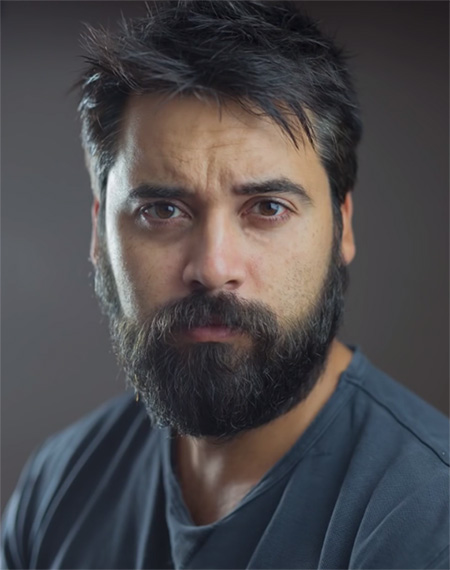The wetplate collodion process was invented back in the 1850s and by the end of the decade it was the most popular photographic process for the time. It was much faster than existing processes, the exposure time was a lot smaller, and from posing to having your picture handed to you the whole process took no more than fifteen minutes. Replicating the wetplate collodion look in Photoshop is not that difficult, as Antti Karppinen shows in the following video:
If you want to replicate the old school look of the old wetplate collodion process, just follow the steps presented by Karppinen in the video above. As you can see, all the images that are used are sources are just normal portraits, nothing out of the ordinary there.

Before
Load your source portrait in Photoshop, then:
- Sharpen the image. Karppinen tells us that he experimented quite a bit with different techniques, and sharpening the image beforehand is a good way to improve the look of your photo at the end of the process.
- Add a bit of motion blur to the image—not a lot, but it should be there. The original wetplate photos were done with low exposure times for their era, but we’ve reduced exposure times so much more since then. Add the motion blur to just the edges, leaving the face itself sharp and crisp.
- Use a color channel and push the blues to plus 200%, this will make the look of the picture closer to what was done back in that day using the collodion technique. This will make the eyes pop up in the image, and the skin tones will change as well.
- Use curve adjustments to make the image a bit darker.
- Using the Levels adjustment layer make the whites… not as white, but a bit grayer.
- Add some textures to add imperfections on the image, to make it look like the original wetplates. Back then, any spec of dust or touch on the wetplate would give the resulting photo some imperfections. It doesn’t matter what specific textures you use, just don’t overdo it with them. These should be done on multiple layers.

After
And that’s it! Using this technique your photos will look like they were done a couple of generations ago—a very cool effect! As you can see in the photos above, the change is quite significant.
Like This Article?
Don't Miss The Next One!
Join over 100,000 photographers of all experience levels who receive our free photography tips and articles to stay current:






Leave a Reply